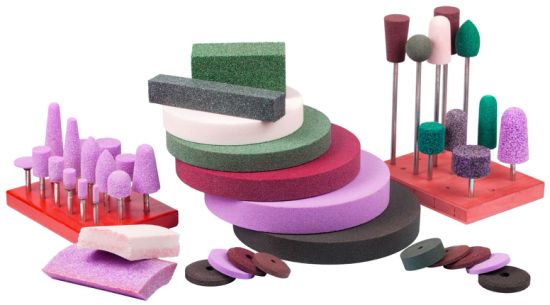Grinding wheels also known as abrasive wheels are used in a range of industries, most commonly manufacturing industries. One can commonly see them in automotive shops, construction sites, tool shops, or the medical manufacturing industry.
Abrasive wheels create a high-quality finish on surface materials by allowing operators to create accurate shapes and dimensions. They can also eliminate high volumes of material at a fast pace, making them a vital tool in a variety of fields.
Abrasive Wheels Statistics
According to the Royal Society for the Prevention of Accidents (RoSPA), accident statistics show that nearly half of all accidents involving abrasive wheels occur because of an unsafe system of work or operator error.
The hazards that abrasive wheels present include the risk of breaking the wheel and contact with the wheel. Other hazards associated with abrasive wheel operation include noise, dust, and vibration.
The Provision of Use of Work Equipment Regulations Act 1998 (PUWER), puts a legal duty on employers to protect the safety of their staff by providing relevant training and instruction to mitigate the risk of accidents, injuries, or ill-health at work.
There are numerous types of abrasive wheels and the type to use depends on the nature and requirements of the task.
This blog post discusses some of the common yet major types of abrasive/grinding wheels.
Types of Abrasive Wheels
Abrasive wheels come in numerous shapes and sizes and each wheel has a specified purpose. Some of them sharpen and cut, whilst others polish and smooth.
Let us discuss a few of them:
-
Straight Grinding Wheels
Straight wheels are the most common type of abrasive wheels that you see all the time in almost every workshop all over the world. They are most commonly used to sharpen the tools like lawnmower blades.
-
Large Diameter Wheels
The large-diameter wheels are the second type of abrasive wheels, are many like straight wheels but they are much larger than the straight grinding wheels. These wide textured wheels grind down the outside of rounded objects like carbide blanks. Also used for grinding in the oil and thermal spray industry.
-
Straight Cup Wheels
One of the most familiar applications of this type of wheel is to polish stone and concrete. But with a small grit, cup wheels can take on delicate jobs such as paints or adhesive removals. They are also often used for reshaping and finishing some applications depending on the size of the abrasive.
-
Dish Wheels
This type of wheel is quite similar to cup wheels but they are shallow and have a thinner surface edge. Their narrow style shape allows them to fit into tight crevices. They are also used for the same applications as the cup wheel.
-
Segmented Wheels
Segmented wheels can be classified into various styles. The major difference for this wheel is instead of having a continuous abrasive rim, the abrasive sections are segmented and implemented into the wheels.
These wheels when used with cooling fluids can remove large amounts of material fast without damaging the surface of your work.
-
Cutting Face Wheels
Cutting face wheels cut over objects by grinding away material. Their width is usually very narrow and takes a lot off at once. It is used for everything from cutting tile to shaping saw teeth.
Abrasive Wheels Regulations
As discussed earlier the Provision and Use of Work Equipment Regulations 1998 (PUWER) is the key legislation for Abrasive Wheels. The main purpose of this regulation is to guarantee that work equipment, involving the abrasive wheels, does not cause any hazards to the safety or health of the individuals carrying out such work. Regardless of the age, condition, or the origin of the work equipment.
And so, it is a legal requirement for anyone working with or using abrasive wheels to take adequate abrasive wheels training to work safely and competently.
The legislation has the following requirements:
- Have a certificate of training
- Considered competent by your employer
- Must obey the Provision and Use of Work Equipment Regulations (PUWER) 1998 legislation
- Must obey the Supply of Machinery (Safety) Regulations 1992 – as amended
Abrasive Wheels Training Courses
Being an employer, it is your legal duty to provide your staff with adequate knowledge and training to work with abrasive wheels safely and competently. There are numerous online and on-site options that employers and business owners can opt for when it comes to providing training.
The abrasive wheels training course provides an introduction to trainees to work safely with abrasive wheels so that users understand the risks and know what control measures are needed to prevent accidents, injuries, or ill-health.
Conclusion
This blog post is a detailed explanation of different types of abrasive wheels according to the nature of work. It also explains the current legislation regarding the use of abrasive wheels and how employers can comply with the law. Training plays a crucial role when it comes to offering adequate information to the staff regarding the safe use of abrasive wheels
Numerous options are available that employers can go for to train their personnel, comply with the law, and work competently.
Follow Techdee for more!





